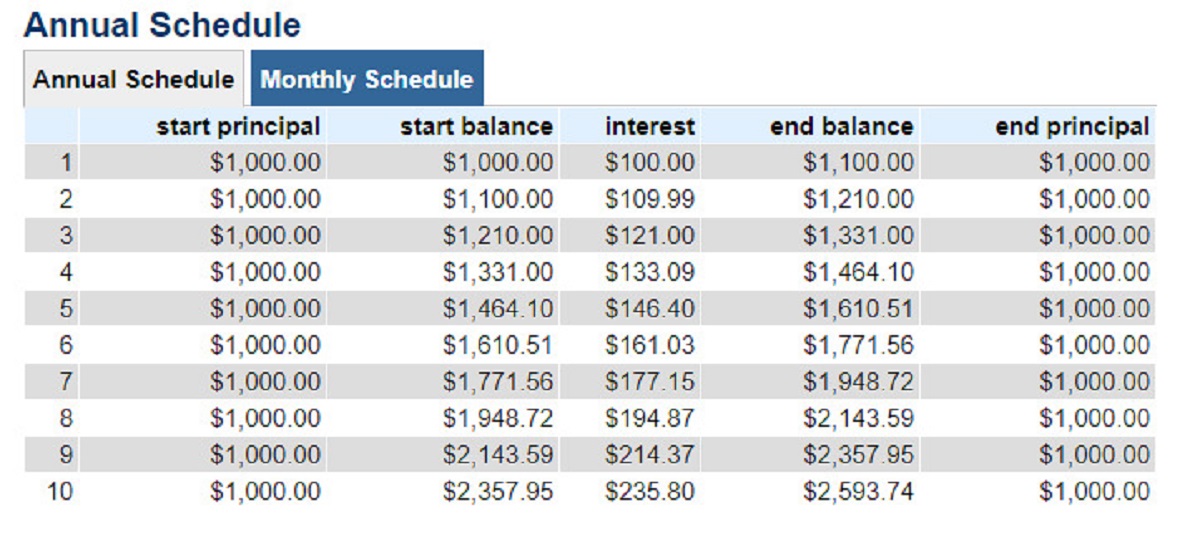Introduction
In today’s rapidly evolving financial landscape, the role of technology, particularly fintech, has become indispensable for financial advisors. Fintech, short for financial technology, encompasses a wide range of digital tools, platforms, and software that aim to automate and streamline various aspects of the advisory process. From client onboarding to portfolio management and reporting, fintech solutions offer tremendous efficiencies, improved client experiences, and increased profitability.
The importance of fintech in the advisory industry cannot be overstated. As technology continues to disrupt traditional business models, advisors must adapt and embrace these technological advancements to stay competitive. With the rise of robo-advisors and online financial planning platforms, clients are now demanding more streamlined and convenient services. As a result, advisory firms need to assess their technology needs and allocate sufficient resources to implement the right fintech solutions.
However, determining how much to spend on fintech can be a daunting task. There are a multitude of factors to consider, ranging from the firm’s size and client base to its growth strategy and budget constraints. It requires careful analysis and planning to strike the right balance between investing in technology and maximizing return on investment.
In this article, we will explore the key factors that advisors need to consider when determining their fintech budget. We will discuss the importance of assessing the firm’s technology needs, conducting a cost vs. benefit analysis, considering available fintech solutions, evaluating customization and integration options, assessing return on investment, ensuring regulatory compliance, and implementing best practices for budgeting fintech expenses.
By the end of this article, you will have a clear understanding of the factors that go into budgeting for fintech and be armed with the knowledge to make informed decisions that align with the goals and objectives of your advisory firm. Let’s dive in.
The Importance of Fintech in the Advisory Industry
The advisory industry is experiencing a profound transformation driven by technological advancements, and fintech is at the forefront of this revolution. Fintech has revolutionized the way financial advisors interact with their clients, manage portfolios, and deliver financial services. Understanding the importance of fintech in the advisory industry is crucial for advisors who want to stay ahead in this competitive landscape.
One of the key benefits of fintech in the advisory industry is automation. Fintech tools automate time-consuming, manual tasks, freeing up advisors’ time to focus on more strategic and value-added activities. Tasks such as data collection, analysis, and reporting can be automated, reducing the risk of human error and improving efficiency. With the help of fintech, advisors can streamline their operations, increase the number of clients they can serve, and provide a higher level of service.
Fintech also plays a vital role in enhancing the client experience. Clients are increasingly tech-savvy and expect convenient and personalized services. Fintech tools enable advisors to deliver a seamless and interactive experience to clients. From online onboarding processes to intuitive client portals, fintech solutions make it easier for clients to access information, monitor their portfolios, and communicate with their advisors. By embracing fintech, advisors can meet and exceed client expectations, leading to increased satisfaction, loyalty, and referrals.
Furthermore, fintech provides advisors with powerful analytical capabilities. With the amount of data available today, it can be challenging for advisors to make sense of it all. Fintech platforms can aggregate and analyze data from various sources, providing valuable insights that help advisors make informed investment decisions. These insights can also be used to personalize investment strategies for clients based on their specific goals, risk tolerance, and preferences. By leveraging fintech analytics, advisors can demonstrate their expertise, gain client trust, and achieve better investment outcomes.
Another crucial aspect of fintech in the advisory industry is its ability to improve compliance and regulatory adherence. Regulatory requirements are becoming increasingly complex, and non-compliance can have severe consequences for advisory firms. Fintech tools can automate compliance processes, ensuring that advisors adhere to regulations and industry best practices. By automating compliance tasks, advisors can reduce the risk of errors and easily generate reports and documentation required by regulators.
In summary, the importance of fintech in the advisory industry cannot be overstated. It offers automation, enhanced client experiences, analytical capabilities, and improved compliance. By embracing fintech, advisors can position themselves as innovative and forward-thinking, attracting and retaining clients in an increasingly digital world. In the next section, we will delve into the factors that advisors need to consider when determining their fintech budget.
Factors to Consider When Determining Fintech Budget
When it comes to determining the fintech budget for your advisory firm, there are several factors that need to be taken into consideration. These factors will help you make informed decisions and allocate your resources effectively. Let’s explore the key factors:
1. Firm Size and Client Base: The size of your advisory firm and the number of clients you serve will have a direct impact on your fintech budget. Larger firms with a substantial client base may require more sophisticated and scalable fintech solutions, which could be more expensive. Smaller firms, on the other hand, may have different budget constraints and need to prioritize cost-effective options that meet their specific needs.
2. Growth Strategy: Consider your firm’s growth strategy when budgeting for fintech. Are you looking to expand your client base or offer new services? If so, you may need to invest in fintech tools that can support your growth objectives. It’s important to assess whether the fintech solutions you choose have the scalability and flexibility to adapt to your firm’s evolving needs.
3. Budget Constraints: Every firm has its own financial constraints and limitations. Understanding your budgetary restrictions will help you prioritize your fintech investments. It may be necessary to evaluate the cost-vs-benefit of different solutions and opt for those that provide the most value within your budget.
4. Specific Technology Needs: Assessing your firm’s technology needs is crucial in determining your fintech budget. Consider the pain points and inefficiencies in your current workflow that can be addressed with the right technology. Are you looking to improve the client onboarding process, streamline portfolio management, or enhance reporting capabilities? Identifying your specific technology needs will guide your budget decisions.
5. Integration with Existing Systems: If you already have systems and software in place, consider how the new fintech solutions will integrate with your existing infrastructure. Seamless integration and compatibility with your current systems will reduce implementation costs and ensure a smooth transition.
6. Customization and Scalability: Depending on your firm’s unique requirements, you may need fintech solutions that can be customized to meet your specific needs. Customization often comes with additional costs, so it’s important to assess the trade-off between customization and scalability. Determine whether the solutions you choose can be scaled up or down as your firm grows or as your needs change.
7. Vendor Reputation and Support: Before finalizing your fintech budget, research and evaluate the reputation and support offered by the vendors. Consider factors such as their track record, customer reviews, responsiveness, and availability of ongoing support and updates. A reputable vendor with excellent customer support can make a significant difference in the success of your fintech implementation.
By considering these factors, you can make well-informed decisions when determining your fintech budget. In the next section, we will discuss how to assess your firm’s technology needs to ensure you choose the right fintech solutions.
Assessing the Firm’s Technology Needs
Before allocating a budget for fintech solutions, it is crucial for advisory firms to assess their technology needs. This assessment will help identify the pain points, inefficiencies, and areas where technology can make a significant impact. Here are some steps to consider when assessing your firm’s technology needs:
1. Evaluate Current Workflow: Start by evaluating your firm’s current workflow and processes. Identify the tasks that are time-consuming, manual, or prone to errors. Look for areas where technology can streamline operations and improve efficiency. This could include client onboarding, data collection, portfolio management, compliance reporting, or other critical processes.
2. Consult with Staff: Involve your staff in the assessment process. They are the ones who interact with technology on a daily basis and can provide valuable insights into the pain points and challenges they face. Conduct interviews or surveys to gather feedback and suggestions on how technology can better support their workflow and improve productivity.
3. Engage with Clients: Understanding your clients’ needs and expectations is equally important. Seek feedback from your clients on their experiences with your firm’s technology and any areas where they feel there is room for improvement. Consider conducting client surveys or holding focus groups to gather insights and ideas for enhancing the client experience through technology.
4. Prioritize Pain Points: Based on the feedback from your staff and clients, prioritize the pain points and inefficiencies that need to be addressed. Identify the areas where technology can have the most significant impact in terms of improving efficiency, reducing errors, enhancing client experience, or enabling scalability.
5. Research Fintech Solutions: Once you have a clear understanding of your firm’s technology needs, begin researching fintech solutions that can address those needs. Look for software platforms, tools, or services that are specifically designed for the advisory industry or cater to your specific pain points. Consider factors such as functionality, ease of use, scalability, integration capabilities, and vendor reputation.
6. Consider Budget and Resources: Evaluate your budget and available resources when considering different fintech solutions. Determine the level of investment that you are willing to make and ensure that the selected solutions align with your financial capacity. Additionally, consider the resources required for implementation, training, and ongoing support.
7. Seek Expert Advice: If you are uncertain about which fintech solutions are most suitable for your firm, consider seeking advice from technology consultants or industry experts. They can provide insights and recommendations based on their knowledge and experience working with other advisory firms.
By thoroughly assessing your firm’s technology needs, you can make informed decisions when it comes to budgeting for fintech solutions. The next section will discuss the importance of conducting a cost vs. benefit analysis to ensure the financial viability of your technology investments.
Cost vs. Benefit Analysis
When it comes to budgeting for fintech solutions, conducting a cost vs. benefit analysis is essential to ensure the financial viability of your technology investments. A cost vs. benefit analysis allows you to evaluate the potential returns and the associated costs of implementing a specific fintech solution. Here are some key considerations for conducting a cost vs. benefit analysis:
1. Quantify the Benefits: Start by identifying and quantifying the benefits that the fintech solution can bring to your firm. These benefits can include improved efficiency, time savings, reduction in errors, enhanced client experience, increased revenue, or cost savings. For example, if the solution automates manual processes, calculate the time saved and the potential increase in productivity.
2. Assess the Costs: Consider the upfront and ongoing costs associated with implementing and maintaining the fintech solution. This includes licensing fees, implementation costs, training expenses, integration costs, and any potential ongoing support or maintenance fees. It’s important to have a clear understanding of the total cost of ownership over the expected lifespan of the solution.
3. Consider Return on Investment (ROI): Calculate the return on investment that the fintech solution can deliver. Compare the projected benefits with the associated costs, and determine the timeline for recouping the initial investment. Consider both the short-term and long-term impact on your firm’s profitability and assess the feasibility of achieving a positive ROI.
4. Evaluate Intangible Benefits: In addition to the quantifiable benefits, also consider the intangible benefits that the fintech solution may bring. These intangible benefits can include improved client satisfaction, strengthened advisor-client relationships, a competitive advantage in the market, or enhanced reputation. While these benefits may be challenging to measure, they play a significant role in the long-term success and growth of your firm.
5. Compare Multiple Options: It’s crucial to evaluate multiple fintech solutions and compare their costs and benefits. Don’t settle for the first option that comes your way. Consider different vendors, functionalities, and pricing models. Compare the cost vs. benefit ratio of each option and select the solution that offers the highest value for your firm.
6. Risk Assessment: Assess the potential risks associated with implementing the fintech solution. Consider factors such as data security, regulatory compliance, scalability, vendor stability, and the potential impact on existing workflows. Mitigating risks is essential to ensure a successful implementation and avoid disruptive and costly issues down the line.
7. Consider the Long-Term Outlook: Finally, take into account the long-term outlook and scalability of the fintech solution. Evaluate its potential to adapt and grow alongside your firm as technology evolves and your business expands. Ensure that the solution aligns with your firm’s future goals and is flexible enough to accommodate future needs.
By conducting a thorough cost vs. benefit analysis, you can make well-informed decisions when budgeting for fintech solutions. The next section will explore the available fintech solutions in the market that can help advisors streamline their operations and improve client experiences.
Available Fintech Solutions in the Market
The fintech market is abundant with a wide range of solutions designed to cater to the needs of the advisory industry. These solutions offer various functionalities and features that can help advisors streamline their operations, enhance client experiences, and drive business growth. Here are some popular fintech solutions available in the market:
1. Robo-Advisory Platforms: Robo-advisory platforms utilize algorithms and automation to provide automated investment advice and portfolio management services to clients. These platforms offer low-cost investment solutions, personalized portfolios, and intuitive user interfaces. They can be an excellent option for advisors looking to reach a broader client base and efficiently manage portfolios.
2. Financial Planning Software: Financial planning software assists advisors in creating comprehensive financial plans for their clients. These platforms offer tools for budgeting, goal setting, retirement planning, and scenario analysis. They enable advisors to provide personalized and goal-based financial planning services, ensuring that clients can make informed financial decisions.
3. Client Relationship Management (CRM) Systems: CRM systems are crucial for managing and nurturing client relationships. These platforms centralize client data, provide tools for tracking interactions, and automate client communication. CRM systems enable advisors to deliver personalized and timely service, manage client onboarding, and track the progress of client goals and financial plans.
4. Portfolio Management Software: Portfolio management software helps advisors efficiently manage and monitor client portfolios. These platforms offer features such as performance tracking, rebalancing, risk assessment, and reporting. They provide real-time portfolio analytics, enabling advisors to make data-driven investment decisions and effectively communicate portfolio performance to clients.
5. Compliance and Regulatory Software: Compliance and regulatory software helps advisors adhere to industry regulations and maintain compliance. These solutions automate compliance processes, generate required reports, and provide regulatory oversight. They help streamline compliance workflows and reduce the risk of regulatory penalties or reputational damage.
6. Document Management Systems: Document management systems offer secure and centralized storage for important client documents. These platforms ensure efficient retrieval and organization of documents, making it easy for advisors to access and share information with clients. Document management systems help streamline operations, reduce paperwork, and enhance data security.
7. Communication and Collaboration Tools: Communication and collaboration tools facilitate seamless communication between advisors and clients. These platforms offer features such as secure messaging, video conferencing, document sharing, and virtual meeting capabilities. They enable advisors to provide personalized and convenient communication channels to clients, enhancing the overall client experience.
It’s important to evaluate the specific needs and requirements of your advisory firm when considering these fintech solutions. Each solution has its own strengths and areas of focus, so it’s crucial to select the ones that align with your firm’s goals and provide the functionalities that will bring the most value to your clients. Consider factors such as functionality, ease of use, scalability, integration capabilities, and vendor reputation when choosing the right fintech solutions for your firm.
In the next section, we will discuss the importance of customization and integration considerations to ensure the fintech solutions you choose seamlessly align with your firm’s operations.
Customization and Integration Considerations
When selecting fintech solutions for your advisory firm, customization and integration capabilities play a crucial role in ensuring a seamless implementation and optimal functionality. Customization allows you to tailor the solution to meet your firm’s specific needs, while integration ensures that the solution integrates smoothly with your existing systems and workflows. Here are some key considerations regarding customization and integration:
1. Customization Options: Assess the level of customization that each fintech solution offers. Customization allows you to align the solution with your firm’s unique processes and requirements. Consider whether the solution can accommodate your branding, terminology, workflows, and compliance policies. The ability to customize the user interface and functionality can greatly enhance the user experience for both advisors and clients.
2. Scalability and Flexibility: It’s important to choose fintech solutions that can scale and adapt as your firm grows or your needs change. Ensure that the solutions have the flexibility to accommodate future business expansions, service offerings, or technological advancements. This will save you the hassle of having to switch to a different solution in the future.
3. Integration with Existing Systems: Consider how the fintech solution integrates with your firm’s existing systems, such as CRM platforms, portfolio management software, accounting systems, or reporting tools. Seamless integration reduces duplication of efforts and enhances operational efficiency. Look for solutions that offer APIs or pre-built integrations with commonly used systems in the advisory industry, ensuring a smooth flow of data between different platforms.
4. Data Security and Compliance: Proper customization and integration should not compromise data security or compliance requirements. Ensure that the chosen fintech solutions adhere to industry-standard security protocols and regulatory guidelines. You should have control over the data that is shared between different systems and maintain data privacy and confidentiality.
5. Training and Support: Consider the training and support provided by the vendor for customization and integration processes. Determine if the vendor offers comprehensive training materials, documentation, and resources to guide your team through the implementation and customization process. Additionally, ensure that the vendor provides ongoing support for any integration challenges or issues that may arise.
6. Cost and Time Considerations: Customization and integration processes can take time and incur additional costs. Evaluate the costs associated with customization and integration, including any professional services or consulting fees. Consider the impact on implementation timelines and ensure that the benefits outweigh the costs in the long run.
Customization and seamless integration of fintech solutions are crucial for maximizing the value and effectiveness of the chosen tools. Take the time to evaluate the customization options offered by vendors and assess the integration capabilities of each solution. By choosing solutions that can be customized to meet your firm’s specific needs and integrate smoothly with your existing systems, you can enhance efficiency, improve client experiences, and drive business growth.
In the next section, we will discuss how to evaluate the return on investment (ROI) of the selected fintech solutions to ensure their financial benefits align with your firm’s goals.
Evaluating Return on Investment
When investment in fintech solutions, it is imperative to evaluate the return on investment (ROI) to determine the financial value and benefits the solutions can bring to your advisory firm. Evaluating ROI allows you to assess the potential returns against the costs incurred. Here are some key considerations for evaluating the ROI of fintech solutions:
1. Identify Financial Metrics: Start by identifying the key financial metrics that are relevant to your firm. These metrics may include increased revenue, cost savings, improved operational efficiency, or reduced client acquisition costs. Clearly define how the fintech solutions are expected to impact these metrics and establish baseline measurements to track and compare before and after implementation.
2. Quantify Benefits: Quantify the benefits that the fintech solutions can bring to your firm. These may include time savings, increased productivity, improved client satisfaction, or enhanced scalability. Assign a monetary value to these benefits wherever possible. For example, if the solution automates manual processes, calculate the time saved and the potential increase in productivity or the cost savings associated with reduced errors.
3. Consider Implementation and Ongoing Costs: Assess the implementation costs and ongoing expenses associated with the fintech solutions. These can include licensing fees, integration costs, training expenses, vendor support, and maintenance fees. It is important to have a clear understanding of the total cost of ownership over time to accurately evaluate the ROI.
4. Compare ROI to Investment Costs: Compare the projected ROI to the costs incurred during the implementation and ongoing usage of the fintech solutions. Calculate the time it will take to recoup the initial investment and evaluate the ROI over the expected lifespan of the solutions. Assess whether the anticipated benefits and financial gains outweigh the costs and if the ROI aligns with your firm’s goals and expectations.
5. Assess Intangible Benefits: In addition to financial benefits, consider the intangible benefits that the fintech solutions can offer. These may include improved client satisfaction, strengthened advisor-client relationships, or a competitive advantage in the market. While these benefits may be difficult to quantify, they can significantly impact the long-term success and growth of your firm.
6. Risk Assessment: Consider the potential risks associated with the fintech solutions and their impact on ROI. Evaluate factors such as data security, regulatory compliance, vendor stability, and the potential for disruption to existing workflows. Mitigating risks is crucial to ensuring a successful implementation and protecting your firm’s financial investment.
7. Monitor and Adjust: Once the fintech solutions are implemented, monitor and track the actual ROI over time. Regularly review the financial metrics and benchmarks established earlier to assess the performance and value delivered by the solutions. Make adjustments and adaptations as needed to optimize the ROI and continually align the solutions with your firm’s evolving needs and goals.
By evaluating the ROI of fintech solutions, you can make informed decisions about the financial benefits they can offer your firm. Consider both the quantifiable and intangible benefits, compare them to the associated costs, and gauge their alignment with your firm’s goals. This evaluation will help you prioritize investments and ensure that the selected fintech solutions provide the maximum financial value and returns to your advisory firm.
In the next section, we will discuss the importance of ensuring regulatory compliance when implementing fintech solutions.
Ensuring Regulatory Compliance
When implementing fintech solutions in the advisory industry, ensuring regulatory compliance is of utmost importance. Regulatory requirements are becoming increasingly stringent, and non-compliance can result in severe consequences for advisory firms. Here are some key considerations for ensuring regulatory compliance when implementing fintech solutions:
1. Understand Applicable Regulations: Gain a comprehensive understanding of the regulations that are applicable to your advisory firm. This may include regulations related to client data protection, privacy, anti-money laundering (AML), know-your-customer (KYC), suitability, reporting, and record keeping. Stay updated on changes in regulations to ensure ongoing compliance.
2. Conduct Due Diligence on Fintech Vendors: Before selecting and implementing fintech solutions, conduct thorough due diligence on the vendors. Verify that the vendors have a strong compliance framework in place and adhere to applicable regulations. Review their data security measures, privacy policies, and their track record of compliance. Ensure that the fintech solutions align with the regulatory requirements of your jurisdiction.
3. Data Privacy and Security: Data protection is a critical aspect of regulatory compliance. Ensure that the fintech solutions you choose have robust data privacy and security measures in place. Assess how client data is collected, stored, transmitted, and protected. Conduct a risk assessment to identify potential vulnerabilities and implement measures to mitigate those risks.
4. User Access Controls: Implement proper user access controls within the fintech solutions to restrict unauthorized access to sensitive information. Grant access rights based on job roles and responsibilities to ensure that only authorized individuals can access and modify client data. Regularly review access rights and promptly revoke access for individuals who no longer require it.
5. Compliance Automation: Look for fintech solutions that offer built-in compliance automation features. These features can help streamline compliance processes and ensure consistency in adherence to regulations. Examples of compliance automation include generating compliant reports, monitoring and flagging suspicious transactions, and facilitating the capture and storage of required client information.
6. Robust Audit Trails: Maintain detailed audit trails within the fintech solutions to track and document all actions related to client data and regulatory compliance. An audit trail can serve as proof of compliance and can be invaluable during regulatory audits or examinations. Ensure that the audit trails are easily accessible, tamper-proof, and retained for the required duration.
7. Ongoing Monitoring and Training: Regularly monitor the usage of fintech solutions to ensure that compliance measures are being followed. Conduct periodic compliance training and awareness programs for employees to educate them on regulatory requirements and best practices. Stay informed and adapt your compliance procedures as regulations evolve or new regulatory requirements arise.
By prioritizing regulatory compliance when implementing fintech solutions, you can mitigate legal and reputational risks and ensure the ongoing trust and confidence of your clients. Compliance should be an integral part of your fintech strategy, and the selected solutions should facilitate compliance rather than create compliance challenges.
In the next section, we will discuss best practices for budgeting fintech expenses to optimize the allocation of resources for your advisory firm.
Best Practices for Budgeting Fintech Expenses
When it comes to budgeting for fintech expenses, it is essential for advisory firms to adopt best practices to ensure effective allocation of resources. Here are some key best practices to consider when budgeting for fintech expenses:
1. Define Clear Objectives: Start by clearly defining your firm’s objectives and goals for implementing fintech solutions. Determine the specific pain points and inefficiencies that you aim to address with the chosen solutions. This clarity will help you prioritize your fintech investments and allocate resources accordingly.
2. Conduct a Needs Assessment: Conduct a thorough needs assessment to identify the specific technology requirements of your firm. Assess the areas where technology can have the most significant impact, such as client onboarding, portfolio management, or compliance. This assessment will help you narrow down the list of necessary fintech solutions and avoid unnecessary expenses.
3. Evaluate Total Cost of Ownership: When budgeting for fintech expenses, consider the total cost of ownership over time. Look beyond the upfront costs and assess the ongoing expenses such as licensing fees, maintenance costs, integration costs, training expenses, and potential vendor fees. This comprehensive evaluation will ensure that you have a realistic understanding of the financial commitment required.
4. Prioritize Solutions: Not all fintech solutions are created equal, and budget constraints may require you to prioritize certain solutions over others. Evaluate the potential impact of each solution on your firm’s productivity, efficiency, and client experience. Prioritize the solutions that align most closely with your firm’s objectives and provide the highest value for your clients.
5. Consider Scalability: Plan for scalability when budgeting for fintech expenses. Anticipate future growth and consider whether the chosen solutions can accommodate your firm’s evolving needs. Scalable fintech solutions can save you from potentially costly migration or replacement of systems as your firm expands.
6. Build in Room for Flexibility: Technology evolves rapidly, and your firm’s needs may change over time. Build in some flexibility in your budget to accommodate potential future technology investments or adjustments. This flexibility will allow you to adapt to emerging technologies or unexpected requirements without straining your budget.
7. Leverage Vendor Support: Engage with your chosen vendors to understand the support and training they offer. Take advantage of any vendor-provided resources, such as training materials or user support, to maximize the benefits of the fintech solutions. Proper training and support will help your team quickly adopt and effectively utilize the solutions, ensuring a higher return on investment.
8. Monitor and Review: Continuously monitor the performance and effectiveness of your fintech solutions. Regularly review key performance indicators and financial metrics to evaluate the impact of the solutions on your firm’s operations and client outcomes. This monitoring will help you identify areas for improvement or potential cost savings opportunities.
9. Stay Informed: Keep up-to-date with industry trends and emerging technologies in the fintech space. Stay informed about new solutions that may enhance your firm’s operations or improve the client experience. Regularly assess the market to ensure that your budget reflects the most current and relevant options available.
By following these best practices, advisory firms can strategically budget for fintech expenses and optimize the allocation of resources. This approach will maximize the value and impact of fintech solutions on your firm’s operations, client experiences, and overall business success.
In the next section, we will conclude the article by summarizing the key points discussed.
Conclusion
In today’s rapidly evolving advisory industry, fintech solutions have become essential for enhancing operations, improving client experiences, and driving business growth. The budgeting process for fintech expenses requires careful consideration of various factors, including firm size, growth strategy, budget constraints, technology needs, customization and integration capabilities, ROI evaluation, regulatory compliance, and best practices.
Advisory firms must assess their technology needs to identify pain points and inefficiencies that can be addressed by fintech solutions. Through customization and seamless integration, firms can optimize the functionality of the solutions and align them with existing workflows and systems. Conducting a thorough ROI evaluation helps determine the financial value and benefits that fintech solutions can bring to the firm. Ensuring regulatory compliance is of utmost importance, as non-compliance can have severe consequences for advisory firms. Best practices for budgeting fintech expenses involve defining clear objectives, conducting needs assessments, evaluating the total cost of ownership, prioritizing solutions, considering scalability and flexibility, leveraging vendor support, monitoring and reviewing progress, and staying informed about emerging technologies and market trends.
By incorporating these best practices, advisory firms can strategically budget for fintech expenses and make informed decisions to maximize the value and impact of fintech solutions. The successful implementation of fintech solutions can lead to improved operational efficiency, enhanced client experiences, and increased profitability.
As the advisory industry continues to evolve, it is crucial for firms to embrace the power of fintech and adapt to changing technological landscapes. By staying proactive and continuously assessing and investing in the right fintech solutions, advisory firms can position themselves as innovative industry leaders, attract and retain clients, and thrive in a competitive market.

























